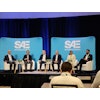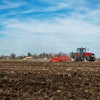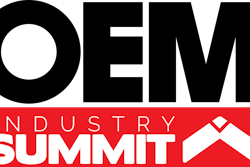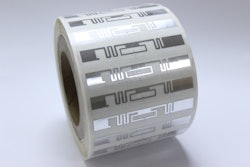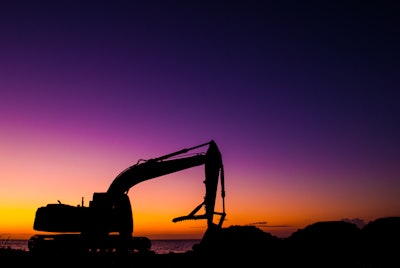
According to the Association of Equipment Manufacturers (AEM), the equipment manufacturing industry in the United States supports 2.3 million jobs and contributes roughly $316 billion to the economy every year, not only driving forward the economy as a whole, but also supporting the markets in which they operate. However, in AEM’s latest study, “The Economic Impact of the Equipment Manufacturing Industry,” the association shares that equipment manufacturers continue to face challenges beyond their reach.
The report states, “Our supply chain is stretched, and lead times are creeping up for critical equipment needed to fulfill the potential of the bipartisan infrastructure bill. We lack the trained workers to fill the high-skilled, family-sustaining jobs that manufacture agricultural, construction, mining, forestry, and utility equipment. But despite these obstacles, equipment manufacturers continue to lead the way.”
To discuss some of the concerns of the off-highway equipment manufacturing industry, OEM Off-Highway spoke with executive representatives from several major players across the equipment manufacturing landscape. Read on for perspectives from seven industry professionals as they share their views on today’s most pressing challenges and what may be the horizon for manufacturing in the future.
Challenge(s) Accepted
In taking stock of industry concerns this year, it’s clear that several existing issues from previous years will remain a challenge. “Clearly supply chain challenges, inflation, costs, and labor were on the minds of everyone. As many other industries, the mobile OEM landscape was impacted by shortages in many areas and challenges at an unprecedented rate,” said Dr. Enrique Busquets, director, engineering systems and components at Bosch Rexroth.
Cummins’ Executive Director of Off-Highway Business Beau Lintereur agrees, noting a slight tapering on some issues. “Supply chain challenges have continued to have a major impact on our industry over the last few years into 2023. We have seen some level of easing in this recently, however managing inventory and continuing to meet customer deadlines remains a challenge across our markets,” he said.
However, John Deere Power Systems’ Director, Global Marketing and Sales Nick Block suggests the company has seen some improvements to supply chain delays, with inventory being rebuilt and customer demand leveling out at times. “Many OEMs are still adjusting to this new normal and trying to forecast what future growth looks like in this post-pandemic supply and demand environment,” said Block.
And while the verdict is the industry today is far better positioned to face these challenges in the coming year, it seems some struggles have lingered. “Remnants of COVID-19 and related supply chain as well as labor disruptions impacted flow in factories during the first part of the year, yet by and large abated towards the end of the year,” said Dr. Wilfried G. Aulbur, senior partner, head global commercial vehicles and off-highway at Roland Berger. “While the overall question of supply chain disruptions will likely be less of an issue in 2024, all other factors that were relevant in 2023 will still be important in 2024.” As manufacturers continue to tackle supply chain snags, another area of interest that is drawing a great deal of focus is decarbonization.
On the emissions front, Cummins isn’t holding back on strategy. “For Cummins we have a dual strategy around sustainability and carbon reductions — continuing to advance engine technology with further advancements in performance, efficiency, and compatibility with cleaner fuels — plus innovating zero-emissions solutions like hydrogen fuel cell and battery technology that can get us to zero emissions,” said Lintereur. “In the short term, it means ensuring our current problems deliver for customers today and in the near term and allow us to invest in the future technology to be ready for when they are ready to adopt it. There is a lot of focus on our next generation engine platforms as part of our path to zero.”
And as many end users find their goals shifting toward reducing emissions, manufacturers look to electrification as one solution. “The electrification of mobile machines is coming; it’s already here to some degree,” said Danfoss Power Solutions President Eric Alström, whose 2023 release of the Dextreme systems pathway focuses on decarbonizing medium to large excavators to help OEMs and their customers to achieve their emissions-reduction targets. “We’re still in the early stages [of electrification] in many sectors, but as buyers become more sensitive to emissions and the precision of controllability, electrification will accelerate,” Alström said.
On the path to decarbonization, Allison Transmission finds that new regulations are driving a new demand for innovation that reduces fuel consumption and emissions. “The transformation from current conventional to future electric vehicle technologies is driving the need for OEMs to push to be ready for commercial vehicle electrification, while also needing to be patient and pragmatic,” said Allison Executive Director of Global Marketing Branden Harbin. “They are shifting research and development spend as well as engineering focus to EV platform development while at the same time advancing conventional technologies to meet current demands and evolving emissions regulations”
According to Cummins, the company is experiencing a period of emissions stagnation in traditional lead emission markets, coupled with mixed signals regarding zero emissions implementation. “OEMs will strive for competitiveness in the market and be required to place their bets on where to allocate engineering resources,” said Lintereur. “Internal combustion engines (ICE) will continue to be the prime mover in off highway markets for the foreseeable future. Selecting the right partner who will continue to serve OEMs with ICE solutions and also having an eye to the future will be a major decision ahead for customers. Cummins is well positioned to support OEMs no matter where they are in the world, or where they are in their decarbonization journey.”
For John Deere, the past several years have reinforced the company’s stance that the path to a sustainable future will not rely on one single solution. “There are applications where ICE will continue to be the optimal solution and others where full battery electric or hybrid diesel-electric will be ideal,” said Block. “For the machine applications where ICE remains the most appropriate power source, biofuels have the potential to make a significant impact on emissions in the near term. The off-highway industry’s diverse needs require a portfolio of solutions to meet power requirements across applications and equipment sizes as we work toward a more sustainable future.”
On the Horizon
As we look ahead to 2024, experts continue to pinpoint what we may be able to expect, not only on the path forward for electrification, but also what’s to come in other areas of the industry. The shortlist of trends shaping the manufacturing industry of tomorrow includes electrification, decarbonization, autonomy, sustainability, hybridization, digitization, and more. Navigating the increasingly complex and uncertain market landscape will be a focus for many manufacturers in 2024.
Roland Berger’s Aulbur notes that in volatile times, companies that are able to simultaneously be robust and efficient are at an advantage. “This requires significant trade-offs from the perspective of investment in flexibility regarding product mix, technologies, etc., versus the need to drive efficiency within functions and across end-to-end processes,” said Aulbur. “In addition, companies that understand how to manage partnerships to complement capabilities and spread risk should be at an advantage in highly volatile environments.”
When it comes to forecasts, Bosch Rexroth believes 2024 will be a year of adjustments for the market. “Historically, companies that use these periods to invest in technologies that enhance the machine operation and/or reduce the operational costs are in better position for the next cycle,” said Busquets.
At Danfoss Power Solutions, the view is that the macroeconomic environment of borrowing costs will likely impact the market in 2024. “Interest rates are much higher than usual, which will limit end users’ ability to finance new machines. This could have an impact not only on OEMs, but further into the supply base as well,” said Alström.
And as we round out 2023, the geopolitical and global economy is still facing significant uncertainty, says Briggs & Stratton Vanguard Vice President of Electrification David Frank, and a lot of this uncertainty is driven by ongoing supply chain challenges. “Vulnerabilities of global supply networks exposed by the pandemic have been exacerbated by transportation bottlenecks, dual supply and onshoring and labor shortages,” said Frank. “All of this has led to price fluctuations and difficulty predicting costs at all levels of the supply chain. I think we will see more of this in 2024 as there is a rebalancing of business demands and supply chain practices. The companies that can put a heavy focus on this have an opportunity to create more value and win in the end.”
According to Allison’s Harbin, at this pivotal stage in the evolution of emerging technologies, collaboration between OEMs and suppliers to manage development costs and capital investments will be essential to ensuring success.
Alström adds that there is also an ongoing trend is the drive for machine differentiation and customization, which is sometimes done with software today, but also with superior hardware, yielding better efficiency and productivity. “This means we’ll continue to see more integration of software, embedded sensing, and the use and management of data,” said Alström, who also notes, “What comes into greater focus because of this trend is the need to attract and hire more software engineers and, of course, mechanical engineers who can drive step-change improvement in hardware.”
When it comes to the challenges OEMs are facing, Deere’s Block says he always comes back to the duality of meeting the current needs of customers while effectively planning for the future and what will be powering their equipment 10, 20 or even 30 years down the road.
“Ultimately,” said Harbin, “the voice of the customer and the broader commercial vehicle industry should drive where we focus our engineering resources and efforts in the near and mid-term.”
Ready for More State of the Industry Coverage?To read more insights from OEM Off-Highway's discussions with industry experts, click the links below. Here, you can access the extended interviews and additional information, including more in the industry's top concerns and a closer look at predictions for the coming year. |
| Read more from Bosch Rexroth's Dr. Enrique Busqets. |
| Read more from Allison Transmission's Branden Harbin. |
| Read more from Cummins' Beau Lintereur. |
| Read more from Danfoss Power Solutions' Eric Alström. |
| Read more from John Deere Power Systems' Nick Block. |
| Read more from Briggs & Stratton Vanguard's David Frank. |
| Read more from Roland Berger's Dr. Wilfried G. Aulbur. |


